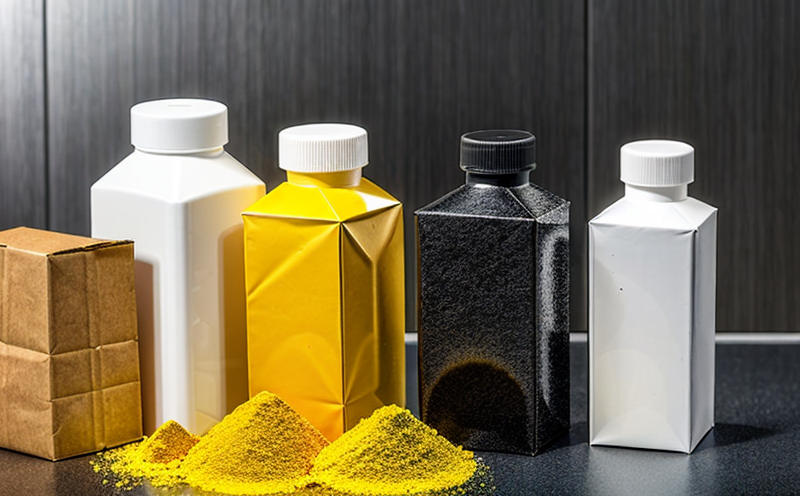Evaluating the effect of accelerated aging on the physical properties of packaging
Accelerated Aging of Packaging Unveiling the Hidden Effects on Physical Properties
In todays fast-paced packaging industry, manufacturers are constantly seeking innovative solutions to ensure their products reach consumers safely and efficiently. However, the harsh realities of environmental factors such as temperature fluctuations, humidity, and light exposure can significantly impact the physical properties of packaging materials. This is where Evaluating the effect of accelerated aging on the physical properties of packaging comes into play a laboratory service that simulates real-world conditions to determine how packaging materials hold up over time.
At Eurolab, our team of experts has developed a comprehensive testing protocol to evaluate the durability and stability of various packaging materials. By conducting these tests in a controlled environment, we help manufacturers make informed decisions about their packaging designs, ensuring they meet regulatory requirements while minimizing costs associated with product failures or recalls.
What is Accelerated Aging of Packaging?
Accelerated aging of packaging refers to the process of artificially speeding up the degradation of packaging materials under various environmental conditions. This involves simulating real-world exposure scenarios in a laboratory setting, typically using specialized equipment such as environmental chambers or light booths. The accelerated aging test subjects the packaging material to extreme temperatures, humidity levels, and light intensities, allowing us to evaluate its physical properties over time.
Why is Evaluating the Effect of Accelerated Aging on Physical Properties Essential for Businesses?
Evaluating the effect of accelerated aging on physical properties is crucial for businesses operating in the packaging industry. Here are some compelling reasons why
Reduced Product Failures By testing packaging materials under simulated environmental conditions, manufacturers can identify potential weaknesses and design improvements before mass production.
Compliance with Regulatory Requirements Companies can ensure their products meet regulatory requirements by demonstrating compliance with international standards for packaging performance.
Cost Savings Conducting accelerated aging tests in a laboratory setting is significantly more cost-effective than recalling defective products or dealing with customer complaints.
Increased Product Shelf Life Manufacturers can optimize their packaging designs to withstand harsh environmental conditions, reducing the likelihood of product degradation and extending shelf life.
Advantages of Using Evaluating the Effect of Accelerated Aging on Physical Properties
Here are some key benefits of utilizing accelerated aging testing
Improved Packaging Design By understanding how packaging materials degrade under various environmental conditions, manufacturers can redesign their products to be more durable and resistant.
Enhanced Product Safety Accurate evaluations of packaging performance help ensure product safety during transportation and storage, reducing the risk of accidents or injuries.
Increased Consumer Confidence Companies that demonstrate a commitment to packaging quality and durability can build trust with consumers, driving brand loyalty and sales growth.
Reduced Environmental Impact By designing more durable packaging materials, manufacturers can reduce waste generation, minimize the carbon footprint associated with transportation, and promote sustainability.
What Types of Packaging Materials Can Be Tested?
Eurolabs accelerated aging testing services are versatile and adaptable to various types of packaging materials, including
Paper-Based Packaging
Plastic Containers
Glass Bottles and Jars
Metal Cans
Fiberglass-Reinforced Plastics (FRP)
Composites
QA Section Frequently Asked Questions About Evaluating the Effect of Accelerated Aging on Physical Properties
Q What is the difference between accelerated aging testing and real-world exposure?
A Accelerated aging testing simulates real-world conditions in a laboratory setting, allowing for faster evaluation of packaging material degradation. Real-world exposure involves actual product exposure to environmental factors over time.
Q How long does an accelerated aging test typically take?
A The duration of an accelerated aging test depends on the type of packaging material and the specific testing protocol used. Tests can range from a few days to several weeks or even months, depending on the desired level of degradation simulation.
Q Can Eurolab provide customized testing protocols for our companys specific needs?
A Yes! Our team at Eurolab is experienced in developing tailored testing protocols that cater to individual client requirements. We work closely with manufacturers to design a testing plan that meets their unique packaging challenges and objectives.
Q What types of reports and documentation do you provide after conducting an accelerated aging test?
A We offer comprehensive reporting, including detailed data analysis, charts, and graphs illustrating the effects of accelerated aging on packaging material performance. Our team also provides recommendations for improving packaging design and durability.
By partnering with Eurolab for accelerated aging testing, manufacturers can ensure their products meet regulatory requirements while minimizing costs associated with product failures or recalls. With our expertise in evaluating the effect of accelerated aging on physical properties, businesses can confidently design and produce high-quality packaging materials that withstand real-world environmental conditions.




